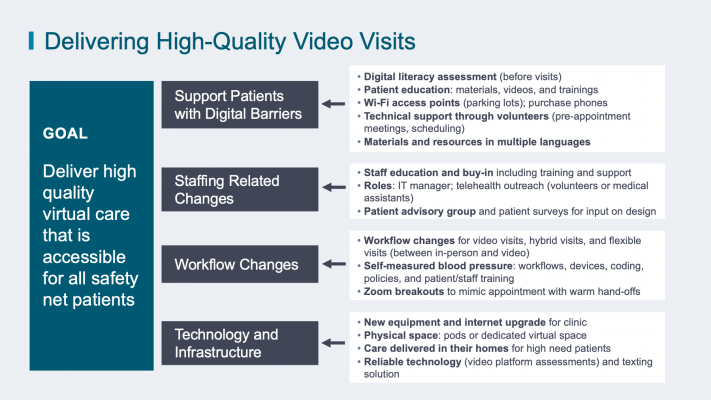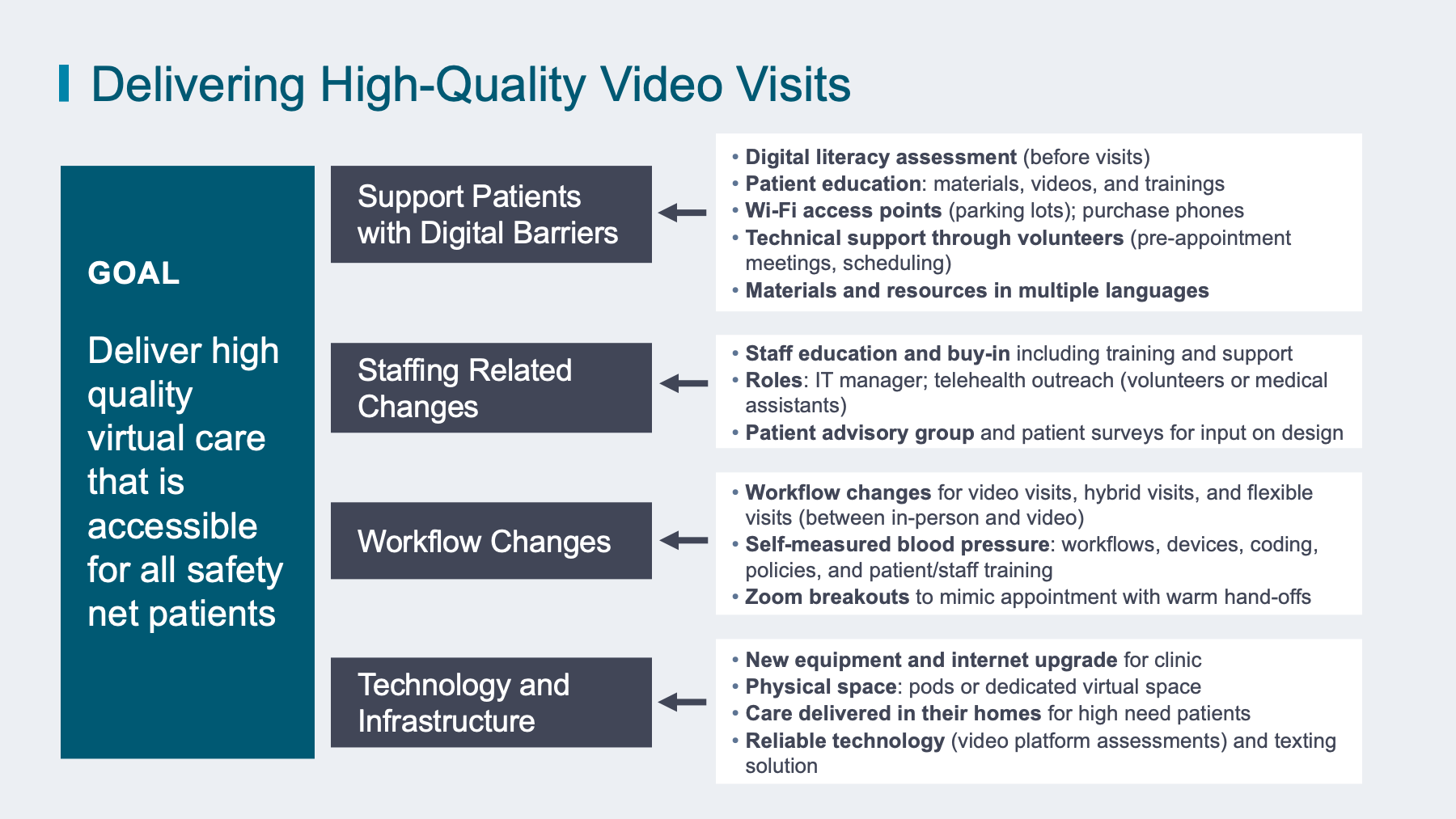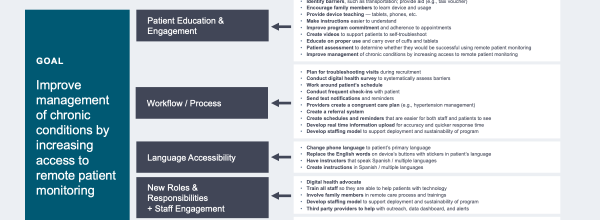Over the last few years, our health systems quickly adapted to offering virtual care to diverse, low-income patients. Through CCI’s virtual care programs in 2020 and 2021, we worked with members of the CCI community to learn about the highest leverage changes that health centers could implement to meet our goal of delivering high quality virtual care that is accessible for all safety net patients.
We chose to use the “driver diagram” structure to help organize what we learned to be the most important levers to achieve our goal of equitable virtual care. This structure provides a simple visual way for others to understand the changes to consider when developing effective virtual care offerings for patients.
To achieve our goal we learned there were four important drivers to consider:
- Develop systems to support patients with digital barriers.
- Develop approaches to support staff to have the skills and clear roles to deliver virtual care.
- Develop changes in workflows for delivering video visits and remote monitoring using new tools and platforms.
- Invest in the technology and infrastructure to enable virtual care.
The last column of the driver diagram provides very specific change ideas that were tested within health centers across California. These change ideas were common across multiple health centers who were successful in achieving their goal of equitable virtual care. CCI has provided more detailed descriptions about many of the change ideas including hybrid scheduling for visits, digital literacy assessments and many of the workflow changes needed for video visits and remote patient monitoring.
There are a lot of changes that need to be made to provide high quality equitable virtual care. This driver diagram aims to provide guidance about what the right changes are to achieve this goal. You will need to work with your organization to prioritize which interventions you want to test and implement given your own internal resources and specific needs of your patients.
Find this useful or interesting? We’re constantly sharing stuff like this. Sign up to receive our newsletter to stay in the loop.



